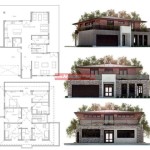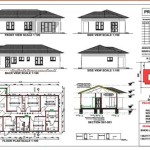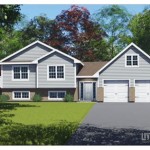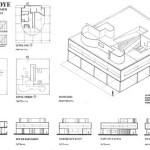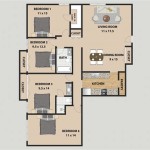Create House Plan: Essential Aspects to Consider
Designing a dream home requires meticulous planning and consideration of various essential aspects. Creating a house plan that not only meets your functional needs but also aligns with your aesthetic preferences is paramount. Here are key factors to consider when creating a house plan:
1. Determine Lot Requirements and Zoning Restrictions
Before embarking on the design process, it's crucial to understand the specific requirements and restrictions of the lot you intend to build on. This includes factors such as lot size, shape, topography, and zoning regulations. These parameters will influence the overall layout and design of your home.
2. Establish Functional Needs and Space Requirements
The core of a house plan lies in defining the functional needs and space requirements of your household. Consider the number of bedrooms, bathrooms, and other essential spaces such as a kitchen, living room, dining area, and storage. Determine the approximate size and configuration of each space to ensure they meet your current and future lifestyle needs.
3. Explore Architectural Styles and Preferences
The architectural style of your home significantly impacts its overall aesthetic appeal. Explore various styles, such as traditional, contemporary, modern, or eclectic, to find one that resonates with your preferences. Consider the materials, finishes, and details that align with your desired architectural style.
4. Plan for Natural Light and Ventilation
Natural light and proper ventilation are essential for creating a comfortable and healthy living environment. Strategically place windows and openings to maximize natural light and airflow throughout the house. This reduces the reliance on artificial lighting and promotes a healthier indoor atmosphere.
5. Consider Energy Efficiency and Sustainability
In today's environmentally conscious era, incorporating energy-efficient measures into your house plan is vital. Consider insulation, energy-efficient appliances, and renewable energy sources such as solar panels. By implementing sustainable practices, you can reduce energy consumption and minimize your environmental impact.
6. Optimize Flow and Functionality
The flow and functionality of your home play a significant role in daily life. Plan for a seamless flow between different spaces and ensure that traffic patterns are efficient and convenient. Consider the placement of doors, windows, and other structural elements to enhance the overall functionality of your house.
7. Plan for Outdoor Spaces and Landscaping
Outdoor spaces extend your living areas and provide opportunities for relaxation, entertainment, and connection with nature. Incorporate patios, decks, or balconies into your plan to create inviting outdoor spaces. Consider landscaping elements such as trees, shrubs, and pathways to enhance the aesthetics and functionality of your outdoor areas.
Conclusion
Creating a house plan is a complex and rewarding process that requires careful consideration of various essential aspects. By understanding your functional needs, exploring architectural styles, maximizing natural light and ventilation, incorporating energy-efficient measures, optimizing flow and functionality, including outdoor spaces, and adhering to lot requirements, you can design a dream home that meets your unique preferences and lifestyle.

Floor Plans Learn How To Design And Plan

Floor Plans Learn How To Design And Plan

Floor Plan Maker

House Plans How To Design Your Home Plan

How To Read Floor Plans 8 Key Elements A Plan Foyr

Customize 2d Floor Plans

Floor Plan Creator Create Detailed And Precise Plans App For Android

Floor Plan Creator Planner 5d

Floor Plan Create 2d 3d Plans Autodesk

Blender For Noobs 10 How To Create A Simple Floorplan In


